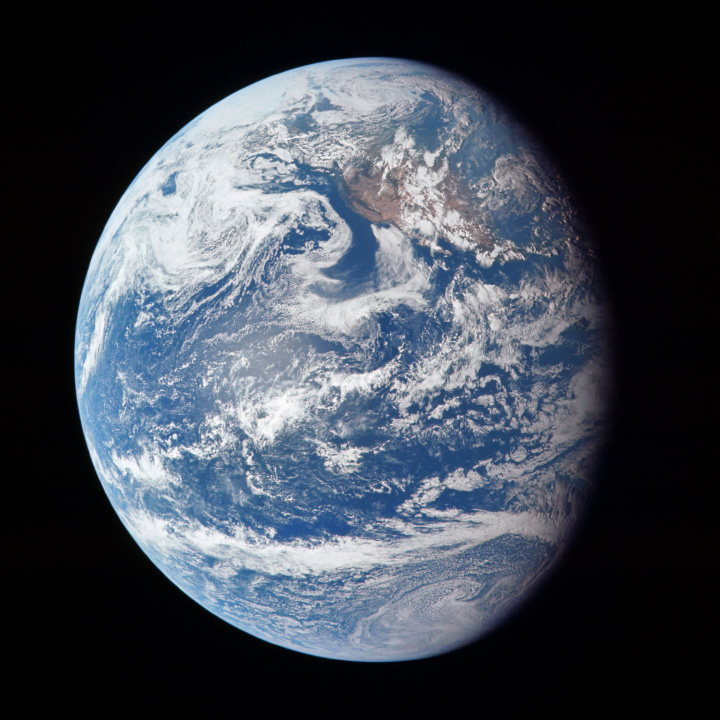1.3. On (unreal) system boundaries
1.3. On (unreal) system boundaries
As mentioned in the introductory course on Planetary Well-being, the Earth as a whole can be considered as a closed system in terms of matter, as no significant amounts of matter enter or leave the planet (except for asteroid collisions). In terms of energy, the Earth is an open system, with solar radiation coming in and thermal radiation going out.

Figure. The Earth + solar radiation = the Earth system. Data acquired July 16, 1969 Apollo 11. NASA.
Although the Earth itself is a closed system, all systems on Earth are open systems. Natural systems, such as plants and animals, and man-made systems, such as cities and factories, all take in matter and energy, use it for their own processes, and then remove matter and energy outside.
All systems on Earth are also interdependent, or at least interact with each other. No single organism can survive without a multitude of other organisms that maintain vital processes such as photosynthesis and decomposition of organic matter. Since all systems on Earth influence other systems, they are in fact parts of one big Earth system.
However, since the entire Earth system is far too large and complex to be managed or understood, in practical action we must draw boundaries to the systems we are working with. Where these boundaries are placed depends on the situation and the actor.
An individual household, for example, plans its purchases and activities according to its needs and resources. While it is not possible to understand all the impacts household activities have outside the household, it is nevertheless important to be aware that there are impacts, and that the impacts are real. Where does the energy, food and other materials used by the household come from, and how does the production of these things affect the rest of the world? Where does the household waste go, and how does it affect the environment?
If the household - or any other system - forgets that the actions of the system always have impacts outside the system, it is likely to run into sustainability problems. The larger the scale of the system, the more likely it is that problems will arise. As already noted in the introductory course, humanity's 'great leaps forward' - the industrial revolution and the development of intensive agriculture - have also led to great problems: climate change, water pollution and dwindling groundwater supplies.
It is necessary to provide some boundary for systems in order to understand and operate with them. However, this does not mean that the effects of a system end at the boundary of the system, or that the responsibility of the designer and user of the system stops at the system boundary.
Would you like to comment something on this section? Voluntary.
